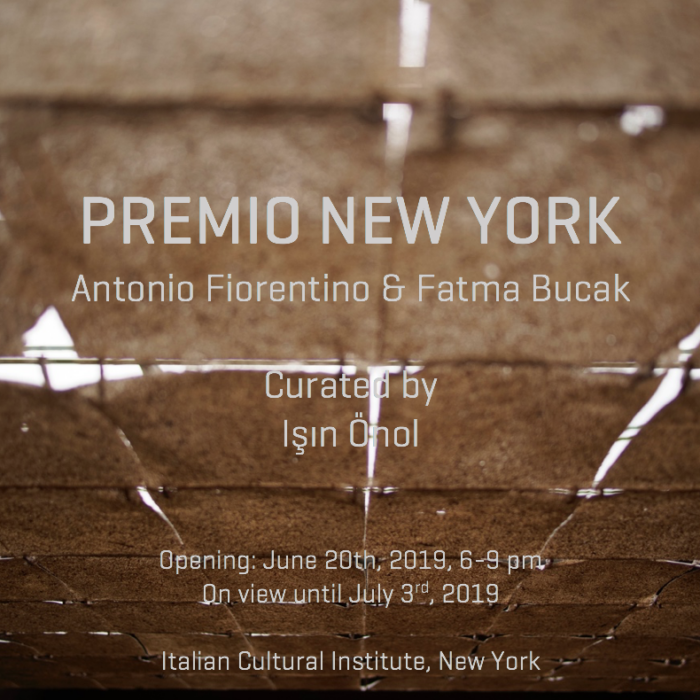Premio New York
PREMIO NEW YORK
Antonio Fiorentino & Fatma Bucak
Opening: June 20th, 2019, 6-9 pm
On view until July 3rd, 2019
Italian Cultural Institute, New York
The exhibition reflects on the research processes of Fatma Bucak and Antonio Fiorentino, throughout their residency period at ISCP (International Studio & Curatorial Program) in New York. The two artists were the award winners of the sixteenth edition of the fellowship Premio New York (New York Prize), 2019.
Embracing the nature of the residency period, the exhibition hosts the artists’ recent work in progress, revealing their material and conceptual interrogations that will lead into mature bodies of work based on their in-depth research on the delicate topics that they are dealing with.
Bucak’s practices in performance, photography, sound, and video center on political identity, cultural and gender norms, and landscape as a space of historical renegotiation. Her recent work examines the fragilities: of politics, of possession, and ultimately of memory, through discarded debris of the city, and turns them into new forms, interrogating what is cast away and what remains.
Fiorentino experiments with matter, manipulating its transformation processes in time, blurring its age. His recent research focuses on material alteration of objects, concealing the natural and human-made forces behind their existence and the aging process.
Throughout the research and production processes of these bodies of work in progress presented in the exhibition, the two artists worked in collaboration with New York-based curator Isin Önol. The exhibition was shaped as a result of their collaborative thinking process and through discussions during their residency.
The fellowship program is organized by The Italian Ministry of Foreign Affairs and International Cooperation (MAECI), the Italian Ministry of Cultural Activities and Tourism (MiBACT), the Italian Cultural Institute in collaboration with Columbia University’s Italian Academy for Advanced Studies in America.
Fatma Bucak lives and works between London and Istanbul. She has had solo exhibitions at Fondazione Merz, GAM – Galleria d’Arte Moderna Sant’Anna, Brown University David Winton Bell Gallery, ARTER Istanbul, Artpace San Antonio, Pori Museum, and Castello di Rivoli. Her work has also been exhibited at the Goteborg Biennial 2017, 54th Venice Biennale Tese di San Cristoforo – Arsenale, The Jewish Museum New York, among others.
Antonio Fiorentino lives and works in Milan. His work has been exhibited in MUSAC Leon, Swiss Institute of Rome, National Gallery of Rome, HIAP Helsinki, Kunst Meran, Center of Contemporary Art Villa Arson Nice, American Academy of Rome, Contemporary Locus Bergamo, and Fondazione Sandretto Re Rebaudengo in Torino among other institutions.
Isin Önol is a New York-based curator. She is a member of the Center for the Study of Social Difference at Columbia University, board member of Roberto Cimetta Fund, and a visiting professor at the visual arts program at Montclair State University in New Jersey.
PRESS
June 30, 2019, ARTRIBUNE: “Premio New York. L’arte italiana si fa materia“, by Maurita Cardone (Italian)
June 23, 2919, VOICE OF AMERICA: “Fatma Bucak’ın Sergisi New York İtalyan Kültür Merkezi’nde”, by Asli Pelit (Turkish)
June 18, 2019, AISE: Fatma Bucak e Antonio Fiorentini: I Vincitori del Premio NY 2018/2019 in Mostra all’IIC, (listing)
Fatma Bucak
A Colossus on Clay Feet

A Colossus on Clay Feet consists of a video performance and a site-specific installation that articulate fragilities—of structure, possession, power, and ultimately of memory—through the discarded debris of the city. In a poetic quest that interrogates the human connection to that which is cast away and that which remains, Bucak cautiously dilutes, then cultivates a commonly used and abused material of human civilization.

Wood, collected from the construction sites of the city, has been processed by the artist with care and transformed into a much more fragile incarnation, in two acts: First, in the form of a video performance, the artist is seen cradling, and then vigorously sanding, a large wooden beam. As the video continues, the dust created by this exertion rises around the artist and then settles on the ground. In ritually reducing this sturdy, square beam and leaving behind a silky dust, the artist celebrates a requiem to both the lifeform that this object once was, and to a passed state of the human-made environment.

Subsequently, the wood dust has been cast into translucent sheets, thus gaining the properties of a messenger: This lightweight and transmittable form allows mobility, and yet is durable enough to be passed on, like a letter or telegram. But unlike these dematerialized media, the pieces maintain a substantial reference to their origins. In this new, refined form, the pieces are admitted to an interior space, where they encounter material peers, domesticated, polished and adopted, and confront them, by humming a tale of transience.

The presence of wood in urban public space usually heralds a process of development, of knocking down or upgrading an existing structure to increase its material and symbolic value. The wood itself may temporarily assume the role of a veil, or a fence, as in “pardon our appearance”, or that of a hand (as a pole, or beam) that maintains balance while other supports are unavailable. While the structural integrity of the original timbers is disrupted, the character of their original assemblage is retained in the re‑installation, suggesting an imminent upgrade.
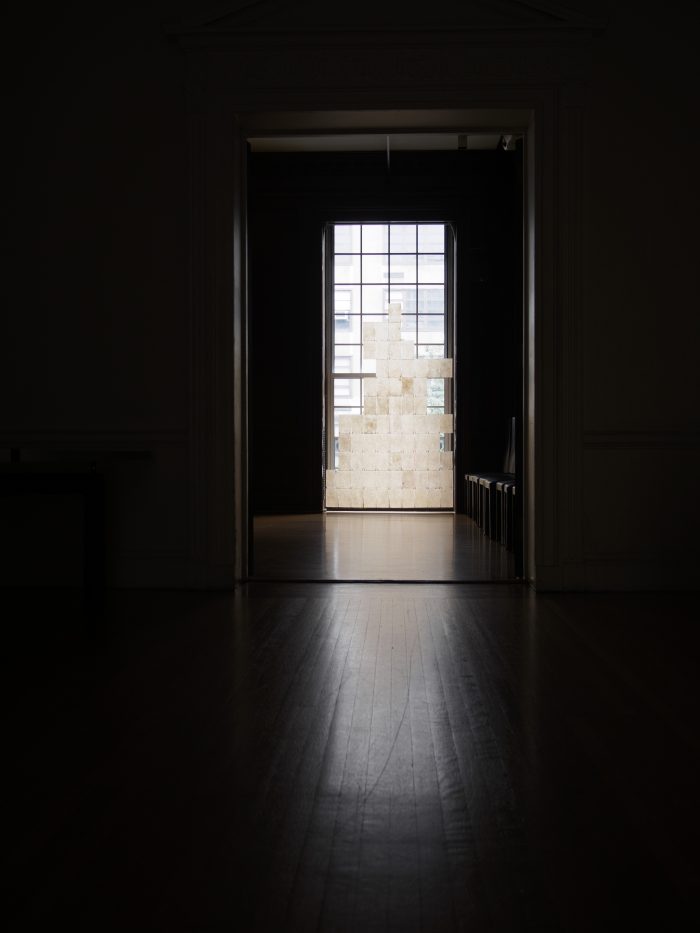





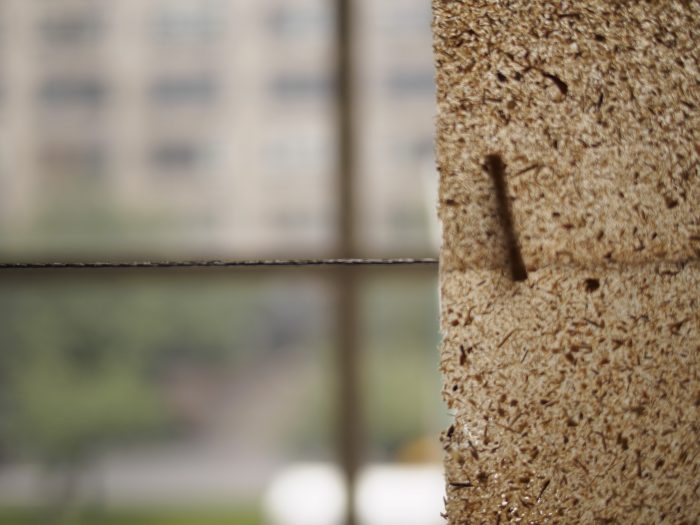

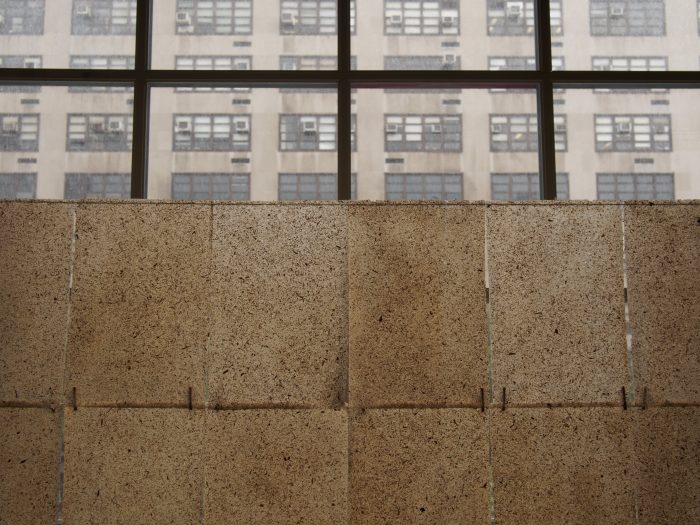
Fatma Bucak lives and works between London and Istanbul. She has had solo exhibitions at Fondazione Merz, GAM – Galleria d’Arte Moderna Sant’Anna, Brown University David Winton Bell Gallery, ARTER Istanbul, Artpace San Antonio, Pori Museum, and Castello di Rivoli. Her work has also been exhibited at the Goteborg Biennial 2017, 54th Venice Biennale Tese di San Cristoforo – Arsenale, The Jewish Museum New York, among others.
Antonio Fiorentino
Untitled – Work in Progress

Antonio Fiorentino displays his research process that developed throughout his visits to the Kiribati islands as well as selected deserted landscapes in the United States.
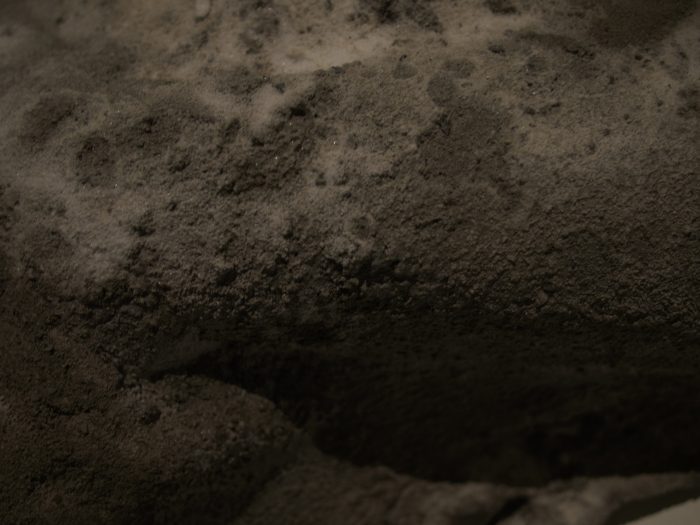
Located on the International Date Line, Kiribati, an insular country in Oceania, is the first country to welcome the new dawn, the new day, the new year. Therefore the country lives in the future, in comparison to the rest of the globe. However, the future of this land is apocalyptic: it runs the risk of permanently disappearing over the coming decades (according to the estimates within 30 to 50 years), as the constantly rising sea level is submerging the islands’ territory.

At this exhibition, Fiorentino juxtaposes material that he collected from this island together with the objects he created, manipulated, or carried from the deserts in the US. His recent research focuses on material alteration of objects and landscapes over time, concealing the natural and human-made forces behind their existence and the aging process. His practices include imitating and involving the natural impacts on material form. He manipulates the transformation process of matter in time, and attempts at blurring its age.
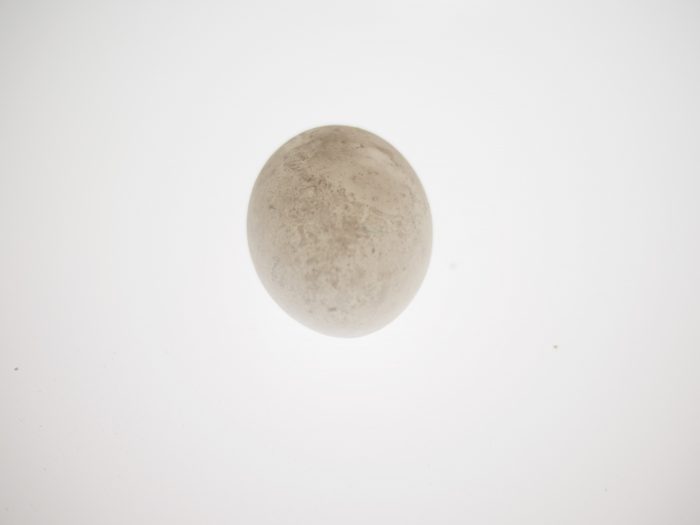
At the display cases, he creates a laboratory environment that deals with material transformation of objects, where wood becomes stone, sand becomes glass, and human made objects change their forms. Placed between his documentary of his visit to Kiribati and the visibly casted statue, Fiorentino leaves the audience in uncertainty: were the objects found in nature, created by human, or perhaps manipulated by the artist himself?

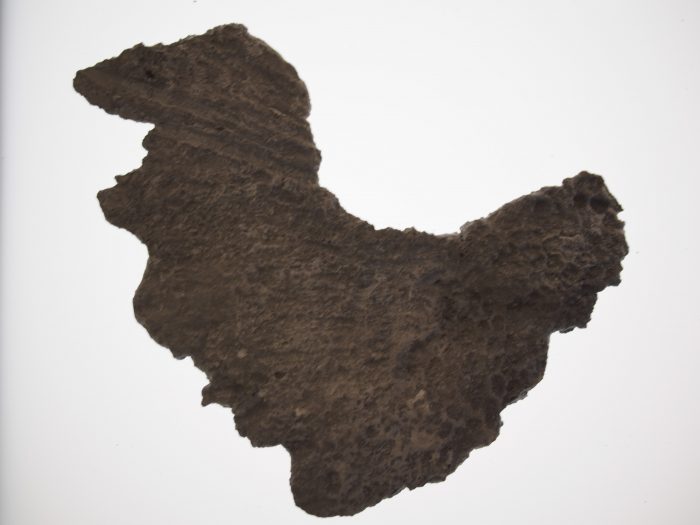
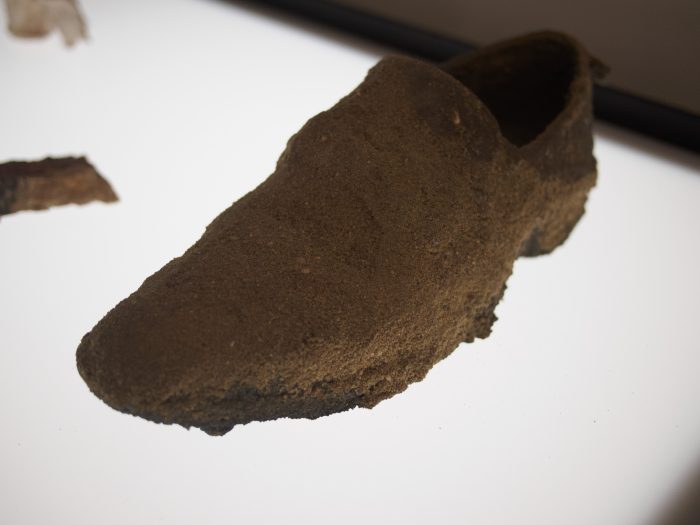


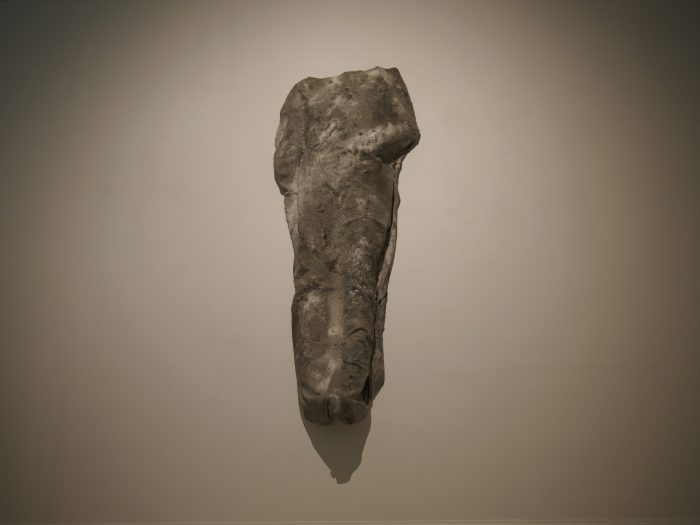
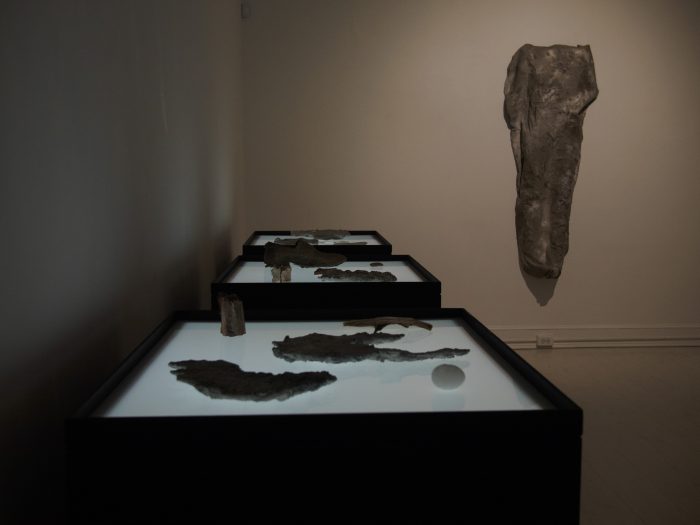
© Images by Tobias Nöbauer
Antonio Fiorentino lives and works in Milan. His work has been exhibited in MUSAC Leon, Swiss Institute of Rome, National Gallery of Rome, HIAP Helsinki, Kunst Meran, Center of Contemporary Art Villa Arson Nice, American Academy of Rome, Contemporary Locus Bergamo, and Fondazione Sandretto Re Rebaudengo in Torino among other institutions.
